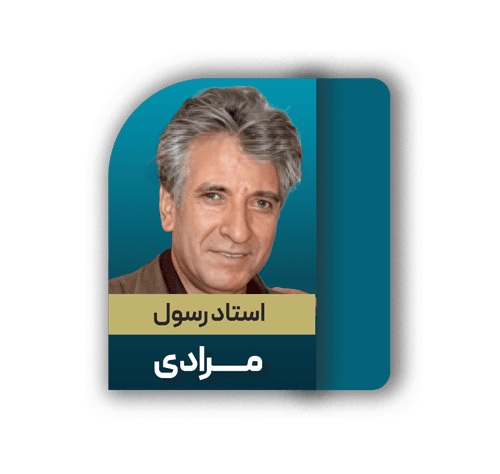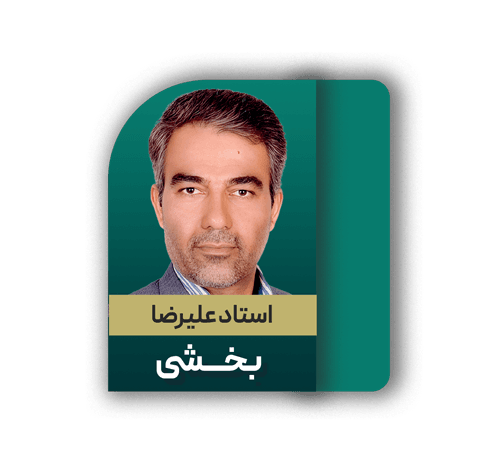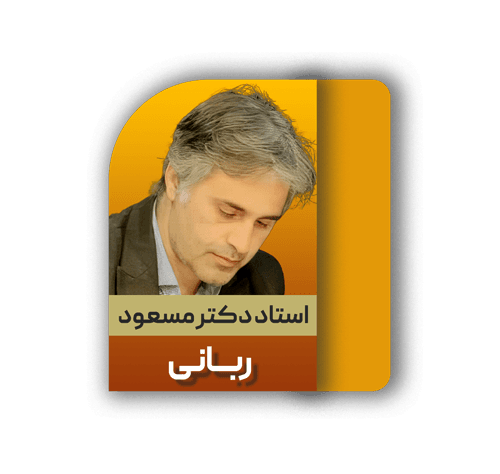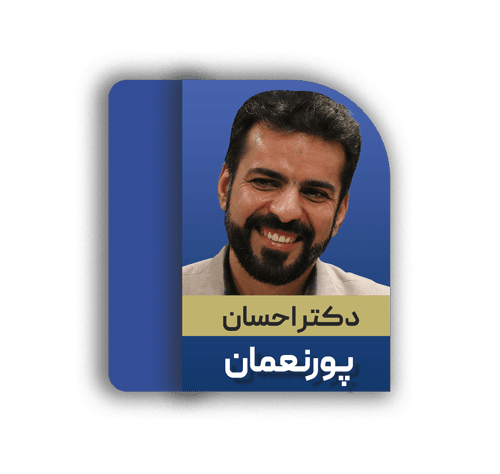About Us


Establishment
This association was established in 1329 AH with the efforts of prominent professors such as Seyyed Hossein Mirkhani and Seyyed Hassan Mirkhani, Ali Akbar Kaveh, Ebrahim Bouzari, and also with the efforts of Mehdi Bayani (researcher and university professor). The structure of the association is determined by a council meeting every four years with the presence and voting of calligraphers from all over the country. Over the past few decades, with the vote of Iranian calligraphers, Professor Gholam Hossein Amirkhani has been the chairman of the Supreme Council, and during his time, the greatest quantitative and qualitative expansion of the association has occurred.

Organizational structure
As one of the oldest independent artistic institutions in Iran, this association is unique in the Middle East. Major policy-making and reviewing the statute are the responsibility of the “Assembly of Representatives,” which is the highest body of the association. Today, this association has more than 320 branches inside and outside the country, and nearly 5,000 students have graduated from it with “excellent” degrees. The number of its instructors reaches more than 1,000, and more than 400 have already attained the rank of professor, and more than 60,000 students annually enroll in educational courses from introductory to advanced.

In addition to teaching various types of calligraphy, including Nastaliq, Shaskheta, Thuluth, and Naskh, this institution has published various calligraphy patterns and produced exquisite literary and mystical books with high circulation, and has held hundreds of domestic and international exhibitions. The anniversary of the founding of this association, October 21, is registered as “National Calligraphy Day” and the week of October 21 to 28 is registered as “Calligraphy Week” in the official Iranian calendar.
Courses and training procedures
Calligraphy training in the Iranian Calligraphers Association classes is based on a master-apprentice system, with the master teaching students one-on-one in the class. Students’ development in these classes is carried out over seven courses, and students have the opportunity to attend the next course if they pass the final exam. After passing the honors course, students graduate from the Calligraphers Association and can continue the next two courses individually and under the supervision of the master. After the end of each course, an official certificate of completion is given to graduates by the Iranian Calligraphers Association and approved by the Ministry of Culture and Islamic Guidance. Given the value of the art of calligraphy in Iran, with the approval of the Council of Ministers, the certificates of the Iranian Calligraphers Association are accepted as equivalent to university degrees when employed in government departments; in this way, a degree with honors is accepted as equivalent to a bachelor’s degree, a degree with super-honors is accepted as equivalent to a master’s degree, and a master’s degree is accepted as equivalent to a doctorate.
The training courses of the Iranian Calligraphers Association are as follows:
- Preliminary
- Medium
- Good
- Excellent
- best
- Superlative
- Mastery
Educational semesters
The Iranian Calligraphers Association’s educational semesters, like university courses, consist of three semesters a year, and begin in a coordinated manner in all branches of the academic year in early October and end in late February with the coordinated holding of the end-of-term exam; the second semester begins immediately after the exam and continues until the end of May, when the second round of exams is held. The summer semester is also held intensively in the months of July and August, and the third round of national exams is held in early September.

National exams
The exams of the Iranian Calligraphers Association are held simultaneously for three consecutive days in each session in 320 branches of the association throughout Iran and 5 branches outside Iran, and all students of each course are busy writing a single text at a certain time throughout the branches, which is announced by the central headquarters at the same time. After the exams, all the papers are immediately sent from the various branches to the central office of the association, and the proofreaders of the association’s specialized commission evaluate the papers, which are anonymous and unidentifiable.
Educational content
The training routine in the Iranian Calligraphers Association is based on teaching Nastaliq calligraphy; however, in the advanced and distinguished courses, students are required to learn one of the broken Nastaliq, Naskh, and Thuluth scripts in addition to Nastaliq and pass the exam; however, in the highly distinguished and mastery courses, students choose one of the four scripts (Nastaliq, broken Nastaliq, Naskh, Thuluth) and if they pass the exam for the same script, they receive a highly distinguished or mastery degree for that script.
In addition to teaching the four scripts with a pen, in the past two decades, teaching Nastaliq calligraphy with a pen for students and other enthusiasts who do not want to write with a pen and ink has become common in the Iranian Calligraphers Association. Today, the Iranian Calligraphers Association has three training courses for handwritten calligraphy (pencil calligraphy): beginner, supplementary, and advanced, and issues official certificates for them. These courses are most welcomed by teachers who intend to teach students.

The presence of the Iranian Calligraphers Association in India
Over the past two decades, a number of Iranian calligraphers have made numerous trips to India, and this cultural connection has led to greater familiarity and interest among Indian calligraphers in the heritage of Iranian calligraphy. A few years ago, thanks to the efforts of Dr. Rabbani, former Cultural Advisor, and Dr. Shokrollahi, former Director of the Iranian Persian Language Research Center in India, efforts were made to expand Persian calligraphy in India, which ultimately resulted in the establishment of an association of Indian calligraphy masters called the Indian Calligraphers’ Association.
During the current advisory period, Dr. Fariduddin Farid Asr devoted more effort to drawing conclusions from past efforts. The first event in this regard was the holding of the Holy Quran writing competition in India, which was held in the past two years with the support of the Iranian Cultural Advisor in Delhi. Given the continuous follow-up of the Iranian Cultural Advisor with the Iranian Calligraphers’ Association, permission was obtained to establish a branch of that association at the Iranian Culture House, and from now on, classes of the Iranian Calligraphers’ Association will be held for Iranian calligraphers’ enthusiasts by the best Iranian masters.


New Delhi Branch of the Iranian Calligraphers Association
This branch was established with the follow-up and request of Dr. Ehsan Pournoman, and the Iranian Calligraphers Association entrusted the management of this branch to him based on his experience. He has a history of managing branches of the Iranian Calligraphers Association and has founded national competitions for the Holy Quran in Iran; the Cultural Advisor of the Islamic Republic of Iran has also been introduced by the association as an observer of the proper conduct of the activities and exams.
Professor Muhammad Ahrar Hindi
- More than 30 years of experience in teaching Nastaliq calligraphy
- More than two decades of efforts to expand Mir Emad al-Hosani’s calligraphy school and revive calligraphy in India
- Holding 8 solo exhibitions in various cities in India
- Holding numerous lectures on the subject of calligraphy in universities and libraries in India
- Writing numerous articles on the subject of calligraphy
- Writing numerous titles for books and compact discs


Professor Rasoul Moradi
- Has a master’s degree from the Iranian Calligraphers Association.
- Senior Professor of the Iranian Calligraphers Association
- More than 40 years of experience teaching Nastaliq calligraphy at the Iranian Calligraphers Association and other reputable centers, and managing branches of the Iranian Calligraphers Association.
- Participated in more than 40 solo and group exhibitions in various cities of Iran, Dubai, UAE, Turkey, Syria, India, etc.
- Winner of four awards at the International Competitions (IRCICA) in Calligraphy and Nastaliq (1998) and Nastaliq Jali and Nastaliq (2001)
- Traveled to India seven times and held calligraphy exhibitions, workshops and lectures.
- Writing and editing the literary collections “Shahnameh of Ferdowsi”, “Divan of Hafez”, “Ghazals of Shams Tabrizi”, “Ghazals of Saadi”. “Golestan of Saadi”, “Ghazals of Attar”, “Rubaies of Khayyam”
- Authoring Nastaliq educational books with the titles “Dar Arena Siah Mashq”, “Dar Arena Chalipa”, “Dar Arena Satra”
Professor Alireza Bakhshi
- Has a master’s degree from the Iranian Calligraphers Association.
- Member of the Evaluation Council of the Iranian Calligraphers Association
- More than 33 years of experience teaching Nastaliq, Thuluth, and Naskh calligraphy at the Iranian Calligraphers Association and other reputable centers, and managing branches of the Iranian Calligraphers Association.
- Complete transcription and publication of the Holy Quran in the Naskh-e-Neirizi script
- Participating in more than 60 domestic and foreign collective exhibitions; holding workshops, training and lectures in countries including Kazakhstan, India, Syria, Tajikistan, Iraq, Georgia, Malaysia
- Writing more than 3,000 meters of Quranic inscriptions in religious places in Iran, Georgia, India and Japan in Thuluth, Nastaliq, Naskh and Kufic scripts
- Artistic works: “Stylistics of Iranian Naskh Calligraphy”, “The Role of Calligraphy in Iranian Architecture”, “Safavid Era, the Cradle of Calligraphy”, “Saveh Grand Mosque with Plaster Renderings”, “The Role of Inscriptions in the Historiography of Historical Monuments”, “The Role of Motifs (Decorations of Islamic Architecture)”, “Hidden Geometry in Iranian Naskh Calligraphy”


Professor Abbas Nouri
- Has a master’s degree from the Iranian Calligraphers Association.
- More than 30 years of experience teaching Nastaliq and Shasqa Nastaliq calligraphy at the Iranian Calligraphers Association and reputable centers
- Judge of the visual arts festivals of the Ministry of Culture and Islamic Guidance and the Iranian Calligraphers Association
- Director of the Shahr-e Ray Calligraphers Association
- Holding and participating in calligraphy exhibitions in Iran and other countries
- Winner of the Islamic World Calligraphy Festival in Shastra
Professor Masoud Rabbani
- Has a master’s degree from the Iranian Calligraphers Association.
- More than 20 years of experience teaching Nastaliq and Shasqa Nastaliq calligraphy at the Iranian Calligraphers Association and reputable centers
- Writing literary books such as “Khayyam’s Rubaiyat”, “Baba Taher’s Couplets”, “Selected Divan of Hafez”, “Collection of Improvisations”
- Holding numerous calligraphy exhibitions and workshops in different cities of Iran and countries such as Indonesia, Italy, and India.


Dr. Ehsan Pournoman
- Has a teaching certificate from the Iranian Calligraphers Association
- More than 20 years of experience teaching Nastaliq and Thuluth calligraphy at the Iranian Calligraphers Association and other reputable centers, and former management of branches of the Iranian Calligraphers Association (Director of the New Delhi branch of the Iranian Calligraphers Association)
- Director of the Holy Quran Recitation School and founder of the National Holy Quran Recitation Competition in Iran and manager of several institutions and art centers.
- Writing more than seven hundred meters of inscriptions of religious sites in Thuluth, Naskh, Nastaliq, and Kufic scripts
- Engaged in designing mosaic tile patterns and designing mosque altars over the past two decades
- Holding three solo exhibitions and participating in more than twenty group exhibitions in Iran and Türkiye

